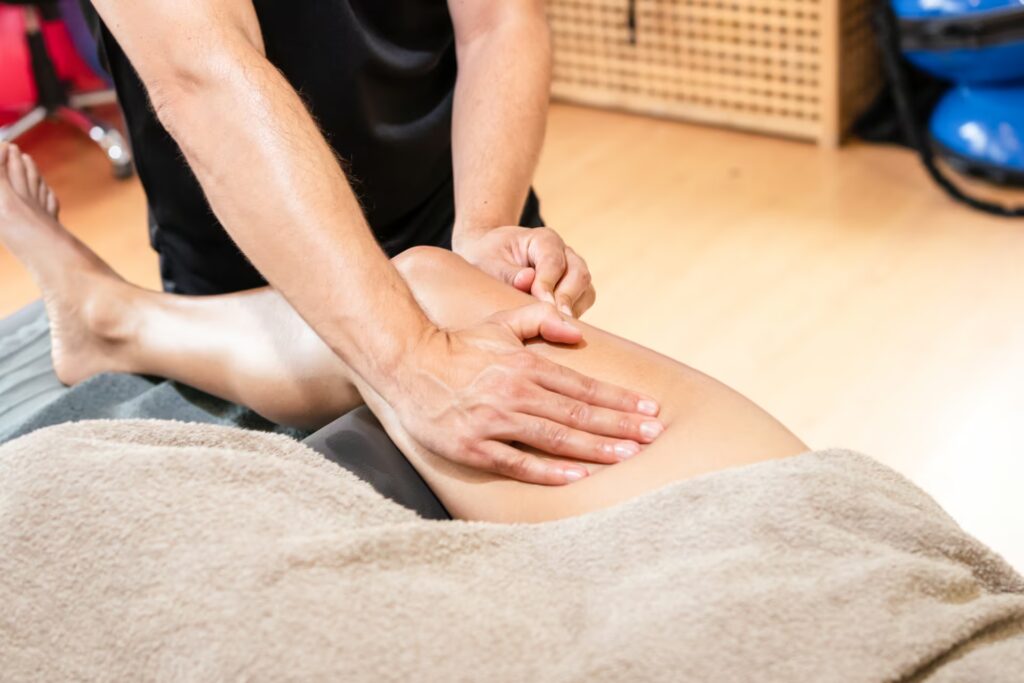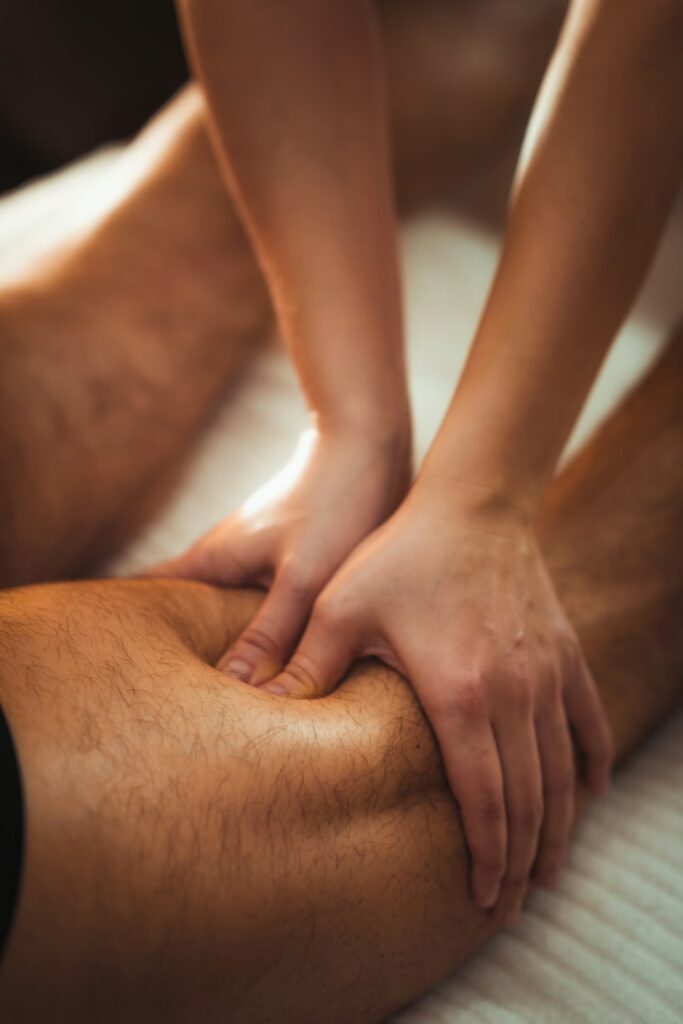
About Sports Massage
Sports massage is a type of massage therapy specifically designed to enhance athletic performance, improve recovery, and treat injuries related to sports and physical activity. It combines techniques from Trigger point therapy, Swedish massage, myofascial release and other modalities to address the unique needs of active individuals.
The goals of sports massage are to:
- Increase flexibility and range of motion
- Reduce muscle tension and soreness
- Improve postural imbalances
- Improve circulation and removal of lactic acid
- Prevent and treat injuries
- Promote faster healing of strained muscles and soft tissue
- Enhance physical and mental preparation
Whether you participate in running, cycling, swimming, weightlifting, team sports, or another physical activity, sports massage can be an invaluable part of your training and recovery. Working with a qualified massage therapist who understands biomechanics and movement patterns can truly take your performance to the next level.
Do I need to be an elite athlete for sports massage?
Absolutely not! Sports massage can benefit anyone from weekend warriors to amateur athletes. The techniques can reduce injury risk and keep your body performing its best for your chosen sport or activity level.
Is it painful?
Communication with your therapist is key. Massage pressure should be firm but never unbearably painful. Some discomfort while working on areas of spasm or adhesion is normal. Your massage can be adjusted based on pressure preferences.
How often should I go?
Many athletes get sports massage once per week or every two weeks as part of their regular training regimen. Massage frequency can increase during peak competition cycles or when recovering from injury.
When should I have my massage?
There are several types of sports massage that can be employed depending on the needs of the athlete and their training cycle:
- Pre-Event Massage: This massage done within 48 hours before an event helps improve biomechanics, flexibility, and focus. Techniques are aimed at increasing blood flow and warming up muscle tissue.
- Post-Event Massage: Receiving bodywork after a competition or hard training session promotes more rapid recovery by reducing muscle spasms, cramps, and metabolic waste build-up.
- Rehabilitative Massage: For when recovering from injury, techniques focus on reducing scar tissue formation, improving range of motion, and promoting healing of damaged soft tissue.
Maintenance/Training Massage: Preventative massage done during training cycles helps decrease tightness, prevent injury, and allow for harder training by improving pliability.

What is the Difference Between Sports Massage and Traditional Massage?
Traditional massage (Swedish, deep tissue, aromatherapy) primarily focuses on general relaxation and stress relief. It typically uses flowing strokes and moderate pressure to promote overall well-being, reduce tension, and stimulate a calming response in the body.
Sports massage, however, targets specific areas relevant to athletic performance and recovery. Rather than full-body relaxation, it employs deeper compression, cross-fibre friction, and joint mobilization techniques specifically designed to address the physical demands of athletic training.
Key differences include:
- Sports massage focuses on performance and recovery, while traditional massage emphasizes relaxation
- Sports massage can be more intense, working to break up adhesions and remove lactic acid
- Traditional massage generally provides a more soothing experience
- Sports massage is often incorporated into training regimens to prevent injuries and improve recovery time
Both approaches have valuable benefits depending on your needs and goals. Athletes often find that adding sports massage to their routine significantly enhances their performance and recovery.